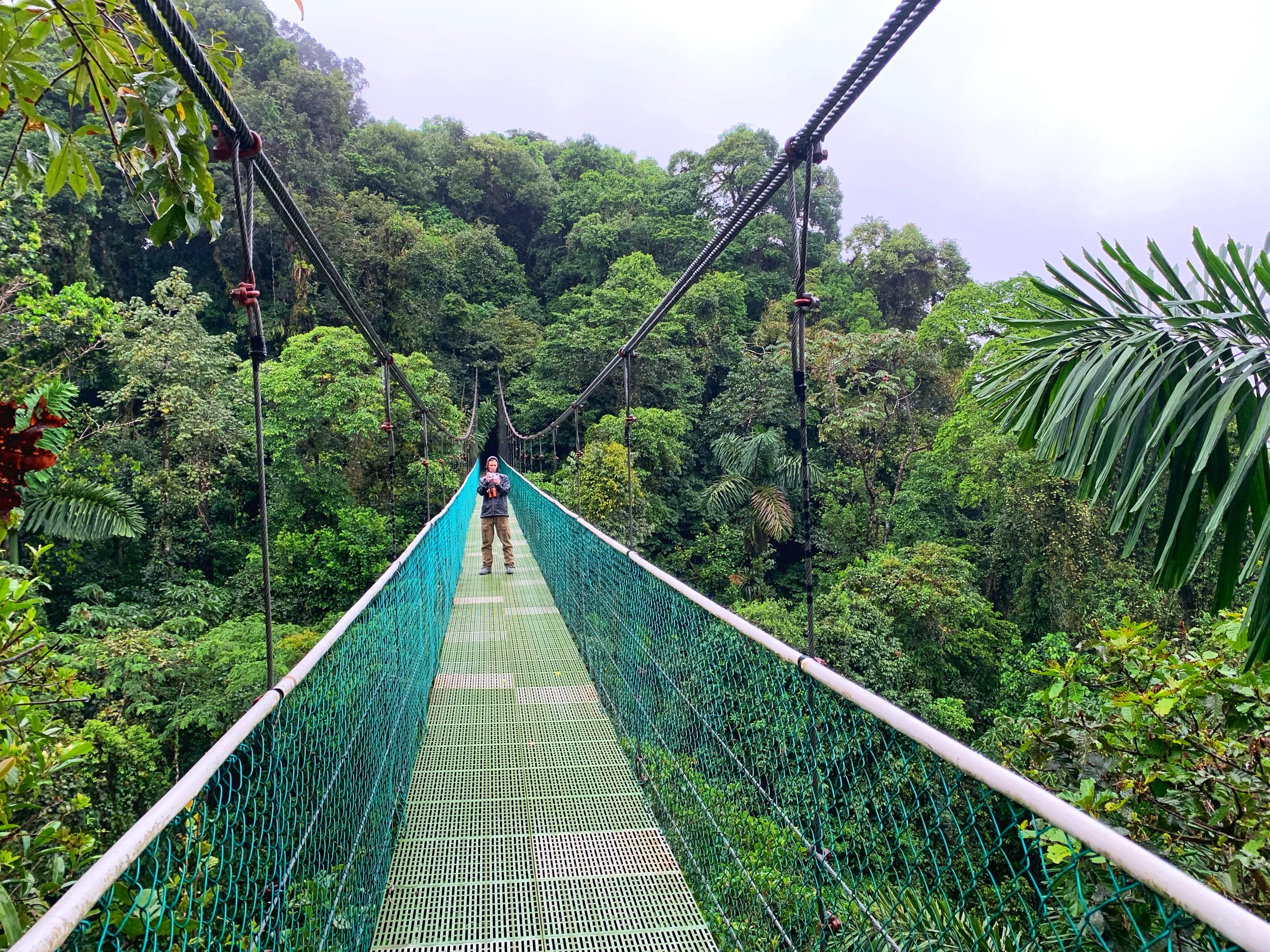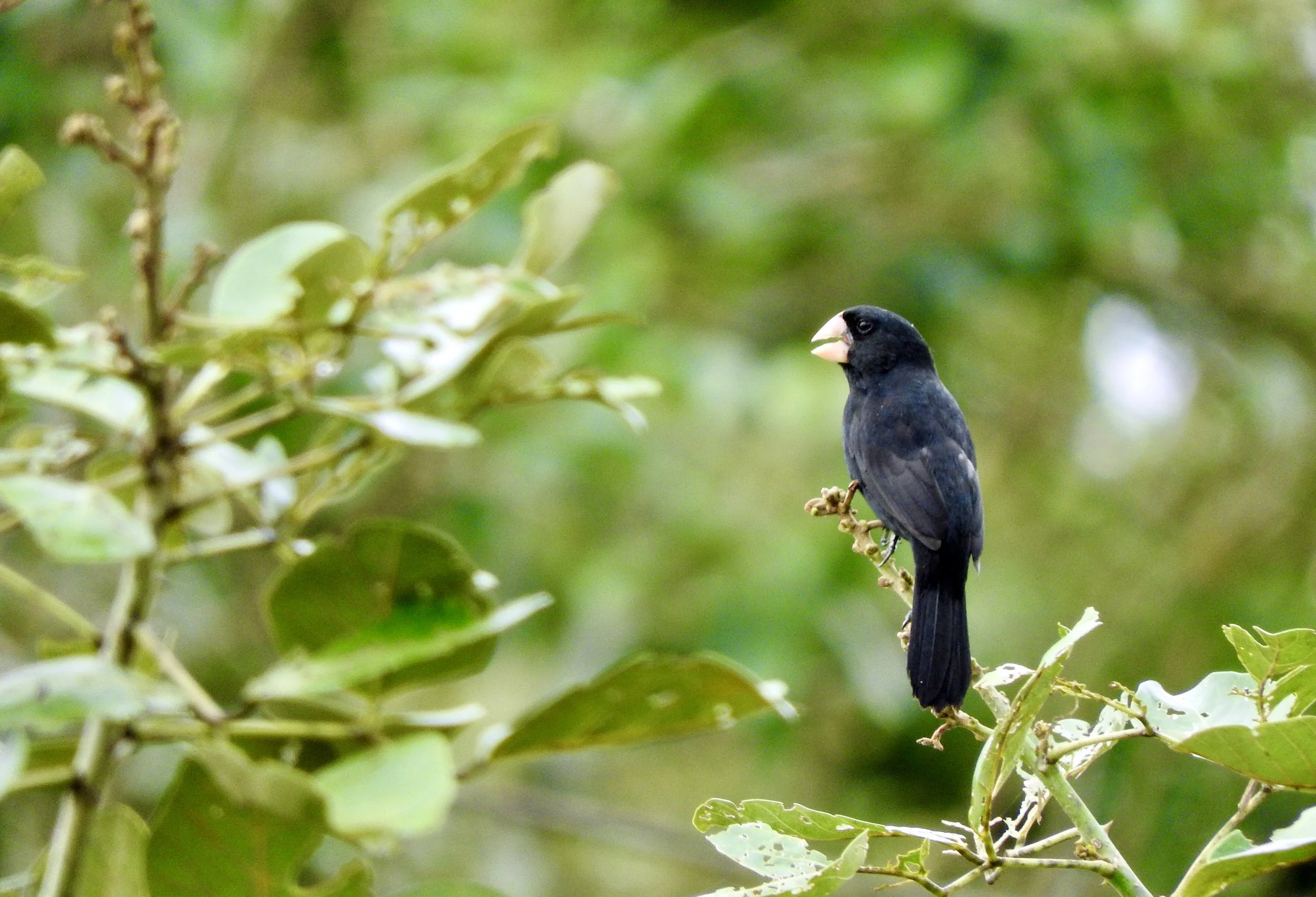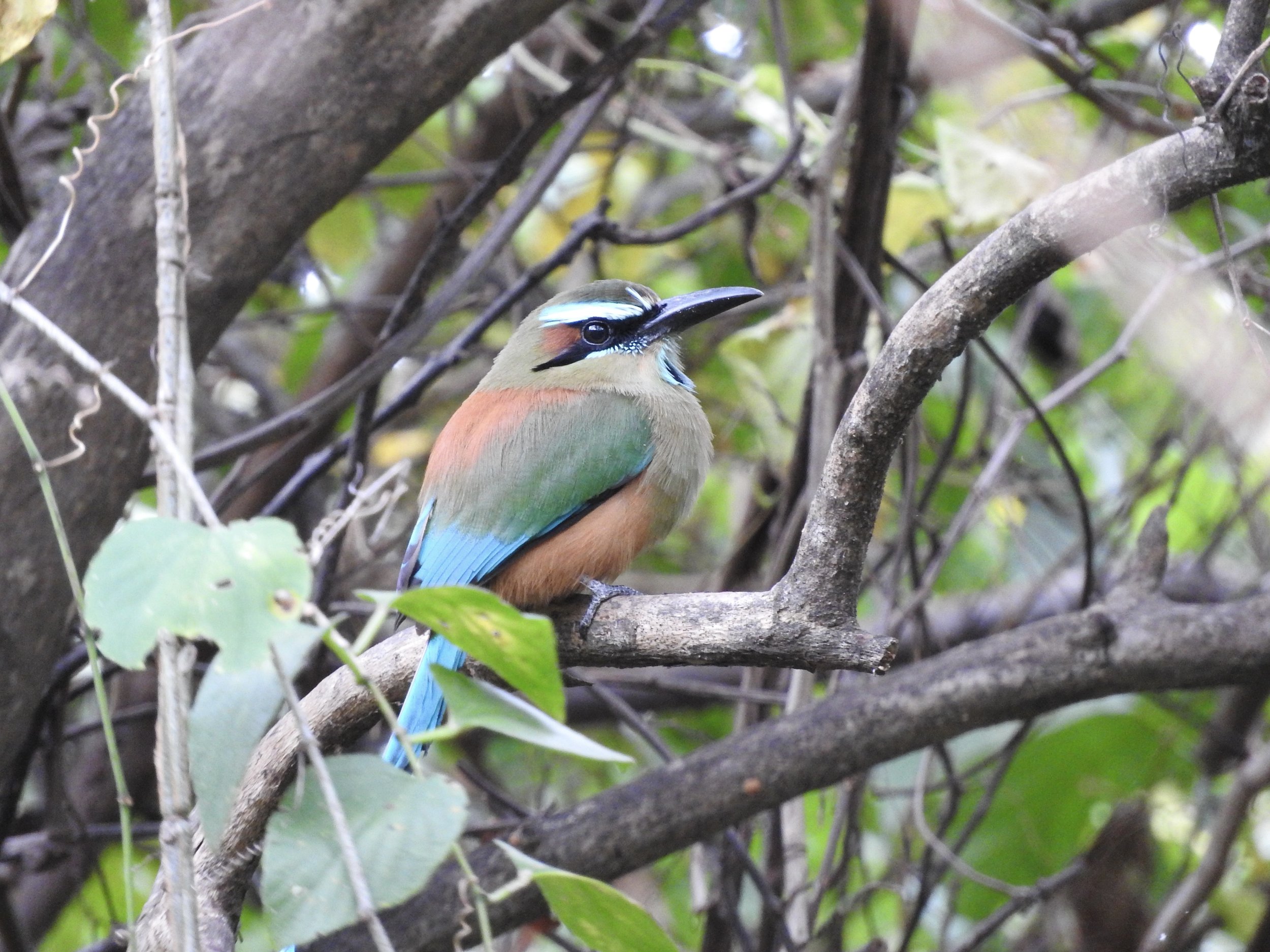Birding Costa Rica: Sky Adventures Arenal and Hacienda La Pacifica
White-throated Magpie-Jay
Our hosts Diego Calderón and Chris Bell, took The Birders Show to Costa Rica. Here’s Part Three of Chris’s trip diary for Field Notes.
Another Damp Morning
After another early-morning start at Linda Vista Arenal Lodge, it became apparent that we were in for another day of rain and difficult birding. The aforementioned “Linda Vista” (“Beautiful View”) from the hotel was not visible, with heavy clouds obscuring the nearby Arenal Volcano and Lake.
After a quick breakfast and some birding around the hotel grounds (which yielded some new birds for the trip, including Melodious Blackbird, White-crowned Parrot, and a trio of egret species), we headed out to our morning bird site: Sky Adventures Arenal Park.
[eBird Checklist for Linda Vista Lodge]
Sky Adventures is a popular tourism destination for its stunning views of Arenal Volcano, hanging jungle canopy bridges, and ziplining. The rainforest trails and bridges are also beloved by birders. Our group was excited for our first foray into this type of habitat in Costa Rica, but the rain was starting - literally - to put a dampener on proceedings. As we pulled into the Sky Adventures parking lot with the rain and mist still surrounding us, it’s safe to say that optimism was not exceptionally high for the morning’s birding.
At first, it seemed as though our pessimism was well-founded: birding under the dense jungle canopy was proving next to impossible, as every leaf moved in the wind, and every glance with binoculars was rewarded with foggy lenses and a shower of raindrops. Moreover, the birds we did see were fleeting views overhead, identified more out of a sense of birding duty than any true enjoyment of the sighting.
The Magic of an Ant Swarm
However, spirits began to lift once we arrived at the first canopy bridge. Not because we suddenly started seeing more birds, but because it’s impossible not to be happy crossing a swinging bridge through the treetops in a Central American rainforest! What nature-lover could fail to be moved by that experience?
Enjoying the canopy bridges at Sky Adventures, Arenal Park
And then, as if the forest was rewarding us for cheering up, the birding also began to take flight. The reason? Two words: ant swarm.
What’s an ant swarm? Well, when army ants columns head out into the jungle on a hunt, they fan out into a single massive hunting swarm. This swarm is hunting for invertebrates like spiders, cockroaches, crickets, and even sometimes larger animals like lizards and frogs. The prey that the swarm scares up is, in turn, feasted upon by antbirds. Many antbird species are frequently found at ant swarms, and there are around 30 species that are known as ant specialists, meaning that they are rarely encountered away from swarms. In addition, other species like woodcreepers, tanagers, and even forest-falcons sometimes join the party. In short, finding an ant swarm is one of the holy grails of neotropical birding.
Birding Fact: learn more about ant swarms in the video below from The Birders Show interview with Jennifer Ackerman, author of The Genius of Birds and The Bird Way:
At first, we didn’t notice the swarm. But then, someone spotted a Bicolored Antbird perched just a couple of meters from the trail, and we stopped to take photos. Focusing the bird with our bins, the forest floor resolved itself into a moving carpet of roving six-legged creatures. Bingo: ant swarm!
Over the next hour, we enjoyed close-up views of five different antbird species: Bicolored, Spotted, Zeledon’s, Dull-mantled (lifer!), and the real star of the show, Ocellated Antbird. This big obligate ant-following species is one of the most sought-after antbirds in the region, and with good reason. With its spectacular electric blue facial skin and scalloped back, the Ocellated Antbird is a real looker and exceptionally tricky to spot away from army ants. We had four individuals perched on the same fallen log at one point (you can see footage of Ocellated Antbird in the video above at 2:57).
After the ant swarm had moved off into deeper forest, we pressed on along the trails. Unfortunately, at this point, the rain really picked up, and after one more mixed flock containing a pair of handsome White-throated Shrike-Tanagers (a lifer and top target for me), we gave up and headed back to the bus. On the final canopy bridge, we got lucky and spotted a stunning male Ornate Hawk-Eagle sheltering from the rain in a cecropia tree, but by that point, the rain was so heavy that we didn’t stick around for long.
This photo quite neatly sums up our morning at Sky Adventures: wet but happy (eventually)!
Onwards to the Pacific “Dry” Forest
After a quick change of wet clothes and lunch, we jumped on the bus to our next destination: the Pacific Dry Forests of Guanacaste Province. Hopefully, with a strong emphasis on “dry.” Our birding until this point had been excellent, despite the weather, but I think everyone was itching to scrap the raincoats and soak up some sun.
After a couple of hours on the bus, we arrived at our lodging for the night, Hacienda La Pacifica. After unloading the bus, we birded around the hotel grounds. We soon logged a bunch of new trip birds and a whole load of lifers for me, including White-throated Magpie-Jay, Yellow-naped Parrot, Streak-backed Oriole, Rufous-naped Wren, and a stunning Turquoise-browed Motmot. But it was getting into the later afternoon, and we still had one more birding stop around some nearby rice fields.
Turquoise-browed Motmot at Hacienda La Pacifica
As the bus drove along the dirt road out to the rice fields, I spotted a single Scissor-tailed Flycatcher flying along the roadside and called out for our driver to stop. It soon became apparent that I needn’t have worried about missing this migratory lifer: the surrounding fields were carpeted with them. Our final eBird list counted 200 Scissor-tailed Flycatcher, but I think that’s an understatement. You couldn’t pan your bins around without counting another dozen of them!
Birding Fact: the Scissor-tailed Flycatcher (Tyrannus forficatus) is part of the Tyrannus, or ‘Tyrant,’ genus of flycatchers. This genus earned its name because many of its species are extremely aggressive when breeding, and often attack much larger birds including corvids, hawks, and owls. The name forficatus comes from the Latin word for ‘scissors’ (forfex).
We rounded out the day with a Nutting’s Flycatcher, Bare-throated Tiger-Heron, and some more Yellow-naped Parrots posing obligingly for the scopes. After taking some photos of a truly stunning sunset, we headed back to Hacienda La Pacifica for dinner.
This Nutting’s Flycatcher was a lifer for most of the group
The day’s birding wasn’t entirely done, as there was still time to spot a Pacific Screech-Owl on the walk back from the dining area to the rooms. By the end of the second day of the group trip, we had accumulated a trip list of over 200 species, and, more importantly, we were finally dry!











